Wildflowers - Texas-Oklahoma Seed Mix
From $499 USDUnit price /UnavailableDescription
The Texas-Oklahoma wildflower seed mix is a carefully curated blend of native wildflower species that thrive in the unique climatic and soil conditions of the southern United States. This mix typically includes a variety of species such as Bluebonnets, Indian Paintbrush, and Black-eyed Susans, which not only add vibrant colors to any garden but also support local ecosystems.
Research indicates that planting native wildflowers can significantly enhance biodiversity. According to the U.S. Fish and Wildlife Service, native plants provide essential habitats for pollinators, including bees and butterflies, which are crucial for the pollination of many crops. In fact, approximately 75% of flowering plants depend on animal pollinators to reproduce, highlighting the importance of incorporating native species into garden designs.
When establishing a garden with a Texas-Oklahoma wildflower seed mix, it is essential to consider the soil type and drainage. These wildflowers generally prefer well-drained soils and can tolerate drought conditions, making them suitable for regions with limited water resources. It is advisable to conduct a soil test to determine pH levels and nutrient content, ensuring optimal growth conditions for the selected wildflower species.
In terms of planting, the ideal time to sow wildflower seeds is in the fall or early spring. This timing allows the seeds to undergo natural stratification, which can improve germination rates. It is recommended to prepare the soil by removing any existing vegetation and loosening the top layer to create a suitable seedbed. A general rule of thumb is to sow seeds at a rate of 1 to 2 pounds per 1,000 square feet, depending on the specific mix and desired density.
Once established, wildflower gardens require minimal maintenance. Regular monitoring for invasive species is crucial, as they can outcompete native plants for resources. Additionally, periodic mowing after the wildflowers have set seed can promote new growth and maintain the aesthetic appeal of the garden. Studies show that gardens with diverse plant species can reduce the need for chemical fertilizers and pesticides, promoting a healthier environment.
In conclusion, incorporating a Texas-Oklahoma wildflower seed mix into your garden not only enhances its visual appeal but also contributes to ecological health. By supporting pollinators and promoting biodiversity, these native wildflowers play a vital role in sustaining local ecosystems. With proper planning and care, a wildflower garden can thrive, providing beauty and ecological benefits for years to come.
Wildflowers - Southwest Seed Mix
From $499 USDUnit price /UnavailableDescription
This Southwest Wildflowers Seed Mix is a carefully curated blend of wildflower seeds specifically designed for the unique climatic and soil conditions found in the southwestern United States. This region is characterized by its arid climate, diverse ecosystems, and a rich variety of native flora. The inclusion of wildflowers in garden landscapes not only enhances aesthetic appeal but also contributes significantly to local biodiversity.
Wildflowers serve as vital components of the ecosystem, providing essential habitats and food sources for various pollinators, including bees, butterflies, and hummingbirds. Studies indicate that gardens featuring native wildflowers can increase pollinator populations by up to 50%. This is particularly important as pollinators play a crucial role in the reproduction of many plants, including those that are vital for human food production.
The Southwest Seed Mix typically includes species such as Desert Marigold (Baileya multiradiata), California Poppy (Eschscholzia californica), and Blue Flax (Linum lewisii). These species are not only drought-resistant but also adapted to thrive in poor soil conditions, making them ideal for sustainable gardening practices. The use of native wildflowers can reduce the need for irrigation and chemical fertilizers, aligning with environmentally friendly gardening principles.
When planting the Southwest Seed Mix, it is essential to consider the timing and method of sowing. The optimal time for planting is in the fall or early spring, as this allows the seeds to benefit from natural rainfall and temperature fluctuations. A light raking of the soil followed by a gentle pressing of the seeds into the ground can enhance germination rates. It is advisable to avoid covering the seeds with soil, as many wildflower seeds require light to germinate.
Once established, wildflower gardens require minimal maintenance. Regular monitoring for invasive species is recommended, as these can outcompete native plants and disrupt the ecosystem. Additionally, allowing wildflowers to go to seed at the end of their growing season can promote self-seeding, ensuring a vibrant display in subsequent years.
In summary, incorporating the Southwest Seed Mix into your garden not only beautifies the landscape but also supports local wildlife and promotes ecological health. By choosing native wildflowers, gardeners can contribute to the preservation of regional biodiversity while enjoying the myriad benefits these plants provide.
Wildflower establishment requires some important steps:- Site selection/preparation: It's important to address competition from weeds: pull, till, or use organic herbicides. If planting in the spring/summer you can wait for weeds to germinate, control and then plant the wildflower seeds.
- Seeding: You will want to have good seed to soil contact, broadcasting by hand is a good approach on small plot, may want to mix with an inert carrier, sand or other. Raking in and covering with soil 2-3 times seed thickness.
- Watering: During establishment for the first month, can be from rain in spring or supplement with irrigation.
- Timing: The best time to plant is in spring to early summer and even again in late fall.Wildflowers - Southeast Seed Mix
From $499 USDUnit price /UnavailableDescription
The Southeast Wildflower Seed Mix is a carefully curated blend of native wildflower seeds that thrive in the diverse climatic conditions of the southeastern United States. This region, characterized by its warm temperatures and varying soil types, provides an ideal environment for a wide range of wildflower species. Utilizing this seed mix can enhance biodiversity, support local ecosystems, and create visually stunning landscapes.
One of the primary benefits of incorporating a Southeast Wildflower Seed Mix into your garden is the promotion of pollinator health. According to the U.S. Fish and Wildlife Service, native wildflowers are crucial for sustaining pollinator populations, including bees, butterflies, and other beneficial insects. These species are responsible for pollinating approximately 75% of flowering plants and one-third of the food crops in the United States. By planting native wildflowers, gardeners can contribute to the conservation of these essential pollinators.
In addition to supporting pollinators, the Southeast Wildflower Seed Mix can improve soil health. Native plants have adapted to local soil conditions and require less water and fertilizer compared to non-native species. Research indicates that native plants can reduce soil erosion by up to 60% due to their deep root systems, which stabilize the soil and promote water retention. This is particularly important in the southeastern region, where heavy rainfall can lead to soil degradation.
Furthermore, planting a wildflower mix can enhance the aesthetic appeal of gardens and landscapes. The vibrant colors and diverse forms of wildflowers can create a dynamic and visually engaging environment. Studies have shown that gardens featuring native wildflowers can increase property values by as much as 15%, making them an attractive option for homeowners looking to enhance their outdoor spaces.
When establishing a garden with a Southeast Wildflower Seed Mix, it is essential to consider the timing and method of planting. The optimal time for sowing wildflower seeds in the Southeast is typically in the fall or early spring, depending on local climate conditions. It is advisable to prepare the soil by removing any existing vegetation and loosening the top layer to ensure good seed-to-soil contact. A light raking can help incorporate the seeds into the soil, promoting germination.
In conclusion, the Southeast Wildflower Seed Mix offers numerous ecological and aesthetic benefits for gardeners in the southeastern United States. By fostering biodiversity, supporting pollinator populations, improving soil health, and enhancing the visual appeal of landscapes, this seed mix serves as a valuable addition to any garden. As awareness of the importance of native plants continues to grow, incorporating wildflowers into landscaping practices will play a crucial role in promoting sustainable gardening and environmental stewardship.
Wildflowers - Righteous Red Scatter Garden Seed Mix
From $499 USDUnit price /UnavailableDescription

Includes a mix of 10 of the most vibrant and beautiful red colored flower varieties. Scatter this mix in your garden and enjoy a beautiful assortment of red flowers!
Wildflower establishment requires some important steps:- Site selection/preparation: It's important to address competition from weeds: pull, till, or use organic herbicides. If planting in the spring/summer you can wait for weeds to germinate, control and then plant the wildflower seeds.
- Seeding: You will want to have good seed to soil contact, broadcasting by hand is a good approach on small plot, may want to mix with an inert carrier, sand or other. Raking in and covering with soil 2-3 times seed thickness.
- Watering: During establishment for the first month, can be from rain in spring or supplement with irrigation.
- Timing: The best time to plant is in spring to early summer and even again in late fall.
This mix includes all of the following seed varieties:GENUS/SPECIES
COMMON NAME

Centaurea cyanus
Cornflower Tall Red
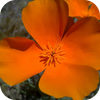
Eschscholzia californica
Mikado

Linum rubrum
Scarlet Flax

Lychinis chalcedonica
Maltese Cross

Papaver rhoeas
Red Corn Poppy

Papaver rhoeas
Shirley Single Mix

Phlox drummondii
Annual Red

Tagetes erecta
French Marigold

Trifolium incarnatum
Crimson Clover

Zinnia elegens
Zinnia Red
Wildflowers - Poppy Scatter Garden Seed Mix
From $499 USDUnit price /UnavailableDescription

Includes a mix of 6 of the most vibrant and beautiful Poppy flower varieties. Scatter this mix in your garden and enjoy a beautiful assortment of Poppy flowers!
Wildflower establishment requires some important steps:- Site selection/preparation: It's important to address competition from weeds: pull, till, or use organic herbicides. If planting in the spring/summer you can wait for weeds to germinate, control and then plant the wildflower seeds.
- Seeding: You will want to have good seed to soil contact, broadcasting by hand is a good approach on small plot, may want to mix with an inert carrier, sand or other. Raking in and covering with soil 2-3 times seed thickness.
- Watering: During establishment for the first month, can be from rain in spring or supplement with irrigation.
- Timing: The best time to plant is in spring to early summer and even again in late fall.
This mix includes all of the following seed varieties:GENUS/SPECIES
COMMON NAME

Eschscholzia californica
California Poppy Orange
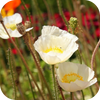
Eschscholzia californica
California Poppy White

Eschscholzia californica
Mikado

Eschscholzia californica
Mission Bells

Papaver rhoeas
Red Corn Poppy

Papaver rhoeas
Shirley Mix Poppy
Wildflowers - Partial Shade Scatter Garden Seed Mix
From $499 USDUnit price /UnavailableDescription
 Plant this mix in an area of your garden that gets partial shade. Includes a mix of 15 different shade tolerant (less than 6 hours of sunlight per day) flower varieties.
Plant this mix in an area of your garden that gets partial shade. Includes a mix of 15 different shade tolerant (less than 6 hours of sunlight per day) flower varieties.
Wildflower establishment requires some important steps:- Site selection/preparation: It's important to address competition from weeds: pull, till, or use organic herbicides. If planting in the spring/summer you can wait for weeds to germinate, control and then plant the wildflower seeds.
- Seeding: You will want to have good seed to soil contact, broadcasting by hand is a good approach on small plot, may want to mix with an inert carrier, sand or other. Raking in and covering with soil 2-3 times seed thickness.
- Watering: During establishment for the first month, can be from rain in spring or supplement with irrigation.
- Timing: The best time to plant is in spring to early summer and even again in late fall.This mix includes the following:
GENUS/SPECIES
COMMON NAME
TYPE
HEIGHT

Aquilegia vulgaris
Garden Columbine
P
10-18"

Centaurea cyanus
Bachelor's Button
A
12-36"

Cheiranthus allionii
Siberian Wallflower
B/P
10-18"
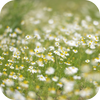
Chrysanthemum maximum
Daisy Chrysanthemum
P
16-24"

Clarkia elegans
Clarkia Mix
A
18-30"

Coreopsis lanceolata
Lance Leaf Coreopsis
P
18-36"

Coreopsis tinctoria
Plains Coreopsis
A
12-36"
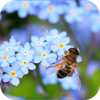
Cynoglossum amabile
Chinese Forget-Me-Not
A/B
18-24"
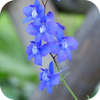
Delphinium consolida
Rocket Larkspur
A
12-36"

Dianthus barbatus
Sweet William
P
12-24"

Digitalis purpurea
Common Foxglove
B/P
24-48"

Gypsophila elegans
Annual Baby's Breath
A
8-18"

Lavatera trimestris
Rose Mallow
A
24-48"

Nemophila menziesii
Baby Blue Eyes
A
4-12"

Papaver rhoeas
Shirley Poppy
A
12-30"
A-Annual
59%
P-Perennial
15%
B-Biennial
26%
Wildflowers - Northeast Seed Mix
From $499 USDUnit price /UnavailableDescription
The Northeast Wildflower Seed Mix is a carefully curated blend of native wildflower species that thrive in the northeastern United States. This mix is designed to support local ecosystems, attract pollinators, and enhance the aesthetic appeal of gardens and landscapes. By incorporating native plants, gardeners can contribute to biodiversity and create sustainable habitats for various wildlife.
Native wildflowers are adapted to the local climate and soil conditions, making them more resilient and easier to maintain compared to non-native species. For instance, many wildflowers in this mix require less water and are more resistant to pests and diseases. Studies indicate that native plants can reduce the need for chemical fertilizers and pesticides by up to 50%, promoting a healthier garden environment.
In addition to their ecological benefits, wildflowers provide essential resources for pollinators such as bees, butterflies, and hummingbirds. Research shows that gardens with a diverse array of native plants can support up to 50% more pollinator species than those with non-native plants. This is crucial for maintaining healthy ecosystems, as pollinators play a vital role in the reproduction of many flowering plants and the production of fruits and vegetables.
When planting a Northeast Wildflower Seed Mix, it is important to consider the specific growing conditions of your garden. Factors such as soil type, sunlight exposure, and moisture levels can significantly influence the success of your wildflower garden. For optimal results, select a location that receives full sun to partial shade and has well-drained soil. It is also advisable to prepare the soil by removing weeds and loosening the top layer to encourage seed germination.
Once planted, the wildflower seeds typically germinate within 7 to 14 days, depending on the species and environmental conditions. It is essential to monitor the garden during the early stages of growth, ensuring that the seedlings receive adequate moisture. After establishment, these wildflowers will require minimal maintenance, allowing gardeners to enjoy a vibrant and low-maintenance landscape.
In conclusion, the Northeast Wildflower Seed Mix is an excellent choice for gardeners looking to enhance their outdoor spaces while supporting local ecosystems. By choosing native wildflowers, gardeners can create beautiful, sustainable gardens that benefit both the environment and the community. With proper care and consideration of local conditions, this seed mix can flourish, providing a stunning display of color and attracting a variety of beneficial wildlife.
Wildflowers - North America Seed Mix
From $499 USDUnit price /UnavailableDescription
North America is home to a diverse array of wildflower species, many of which can be successfully cultivated in garden settings. Utilizing a wildflower seed mix specifically designed for North American climates can enhance biodiversity, support local ecosystems, and create visually appealing landscapes. These seed mixes typically contain a variety of native species that are well-adapted to local soil and climate conditions.
Wildflower seed mixes often include species such as Black-eyed Susan (Rudbeckia hirta), Purple Coneflower (Echinacea purpurea), and Butterfly Weed (Asclepias tuberosa) and so much more. Each of these species plays a crucial role in supporting pollinators, including bees and butterflies, which are essential for the health of many ecosystems. Studies indicate that native plants can increase pollinator populations by up to 50%, contributing to improved pollination services for both wild and cultivated plants.
When selecting a wildflower seed mix, it is important to consider the specific growing conditions of your garden. Factors such as soil type, sunlight exposure, and moisture levels can significantly influence the success of wildflower cultivation. For instance, some species thrive in well-drained sandy soils, while others prefer moist, loamy conditions. A well-chosen mix can provide a continuous bloom throughout the growing season, with some species flowering in early spring and others in late summer or fall.
Incorporating a North America wildflower seed mix into your garden can also contribute to soil health. Native wildflowers often have deep root systems that improve soil structure and reduce erosion. Additionally, these plants can enhance nutrient cycling and support beneficial microorganisms in the soil. Research suggests that gardens with diverse plant species can improve soil organic matter by as much as 20%, leading to healthier growing conditions for all plants.
Furthermore, wildflower gardens require less maintenance compared to traditional lawns or ornamental gardens. Once established, many native wildflowers are drought-tolerant and require minimal watering. This can lead to significant water savings, particularly in regions prone to drought. According to the U.S. Environmental Protection Agency, native landscaping can reduce water usage by up to 50% compared to non-native plantings.
In conclusion, incorporating a North America wildflower seed mix into your garden not only enhances its aesthetic appeal but also promotes ecological health and sustainability. By choosing native species, gardeners can support local wildlife, improve soil health, and reduce maintenance efforts, making wildflower gardens a practical and beneficial choice for both the environment and the gardener.
Wildflowers - Moist Area Scatter Garden Seed Mix
From $499 USDUnit price /UnavailableDescription
 Includes a mix of 16 different beautiful flower varieties. Cover moist spaces with moist soi tolerant wildflowers! Mix includes annuals and perennials. Easy to grow and require little maintenance.
Includes a mix of 16 different beautiful flower varieties. Cover moist spaces with moist soi tolerant wildflowers! Mix includes annuals and perennials. Easy to grow and require little maintenance.
Wildflower establishment requires some important steps:- Site selection/preparation: It's important to address competition from weeds: pull, till, or use organic herbicides. If planting in the spring/summer you can wait for weeds to germinate, control and then plant the wildflower seeds.
- Seeding: You will want to have good seed to soil contact, broadcasting by hand is a good approach on small plot, may want to mix with an inert carrier, sand or other. Raking in and covering with soil 2-3 times seed thickness.
- Watering: During establishment for the first month, can be from rain in spring or supplement with irrigation.
- Timing: The best time to plant is in spring to early summer and even again in late fall.This mix includes the following:
GENUS/SPECIES
COMMON NAME
TYPE
HEIGHT
COLOR

Aquilegia vulgaris
Dwarf European Columbine
P
10 to 18
Red/Violet/Blue

Centaurea cyanus
Bachelor's Button
A
12 to 36
Blue or Mix

Cheiranthus allionii
Siberian Wallflower
B/P
10 to 18
Orange

Chrysanthemum maximum
Daisy Chrysanthemum
B/P
16 to 24
White

Clarkia elegans
Clarkia Mix
A
18 to 30
Pink/Lavender

Coreopsis lanceolata
Lance Leaf Coreopsis
P
18 to 36
Yellow

Coreopsis tinctoria
Plains Coreopsis
A
12 to 36
Yellow-Maroon

Collinsia heterophylla
Chinese Houses
A
12 to 24
White-Violet

Delphinium consolida
Rocket Larkspur
A
12 to 36
White/Pink/Blue/Violet

Dianthus barbatus
Sweet William
P
12 to 24
White/Pink/Red
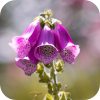
Digitalis purpurea
Common Foxglove
B/P
24 to 48
Purple/Cream

Gypsophila elegans
Annual Baby's Breath
A
8 to 18
White

Lavatera trimestris
Rose Mallow
A
24 to 48
White/Pink

Nemophila menziesii
Baby Blue Eyes
A
4 to 12
Blue

Papaver rhoeas
Shirley Poppy
A
12 to 30
White/Pink/Red

Viola cornuta
Helen Mount
A/P
4 to 12
Purple/Yellow/Blue
A- Annual
69%
P- Perennial
16%
B- Biennial
15%
Wildflowers - Midwest Seed Mix
From $499 USDUnit price /UnavailableDescription
The Midwest wildflower seed mix is a carefully curated blend of native flowering plants that thrive in the diverse climates of the Midwestern United States. This mix typically includes species such as Black-eyed Susan (Rudbeckia hirta), Purple Coneflower (Echinacea purpurea), and Wild Bergamot (Monarda fistulosa), among others. These plants are not only aesthetically pleasing but also play a crucial role in supporting local ecosystems.
Utilizing a Midwest wildflower seed mix in your garden can yield numerous benefits. Firstly, native wildflowers are adapted to the local environment, which means they require less water and maintenance compared to non-native species. Studies have shown that native plants can reduce water usage by up to 50% once established, making them an environmentally sustainable choice for gardeners.
Moreover, these wildflowers provide essential habitat and food sources for pollinators such as bees, butterflies, and hummingbirds. Research indicates that gardens with native plants can support up to 10 times more pollinator species than those with non-native plants. This increase in biodiversity is vital for the health of ecosystems, as pollinators are responsible for the reproduction of approximately 75% of flowering plants worldwide.
When planting a Midwest wildflower seed mix, it is important to consider the soil type, sunlight, and moisture levels of your garden. Most wildflowers prefer well-drained soil and full sun exposure, although some species can tolerate partial shade. It is advisable to conduct a soil test to determine pH levels and nutrient content, which can guide the selection of appropriate wildflower species for your specific garden conditions.
To establish a successful wildflower garden, it is recommended to prepare the soil by removing any existing vegetation and loosening the top layer. Broadcasting the seeds evenly across the prepared area and lightly raking them into the soil can enhance germination rates. It is crucial to keep the soil moist during the initial growth phase, which typically lasts for several weeks.
In conclusion, incorporating a Midwest wildflower seed mix into your garden not only enhances its visual appeal but also contributes to ecological health. By choosing native species, gardeners can create sustainable landscapes that support local wildlife, reduce resource consumption, and promote biodiversity. As awareness of the importance of native plants continues to grow, the Midwest wildflower seed mix stands out as a practical and beneficial choice for environmentally conscious gardeners.
Wildflowers - Lupine Scatter Garden Seed Mix
From $499 USDUnit price /UnavailableDescription
 Includes a mix of 5 popular lupine flower varieties and colors. Scatter this mix of seeds in your garden and enjoy a beautiful assortment of lupine flowers.Wildflower establishment requires some important steps:- Site selection/preparation: It's important to address competition from weeds: pull, till, or use organic herbicides. If planting in the spring/summer you can wait for weeds to germinate, control and then plant the wildflower seeds.
Includes a mix of 5 popular lupine flower varieties and colors. Scatter this mix of seeds in your garden and enjoy a beautiful assortment of lupine flowers.Wildflower establishment requires some important steps:- Site selection/preparation: It's important to address competition from weeds: pull, till, or use organic herbicides. If planting in the spring/summer you can wait for weeds to germinate, control and then plant the wildflower seeds.
- Seeding: You will want to have good seed to soil contact, broadcasting by hand is a good approach on small plot, may want to mix with an inert carrier, sand or other. Raking in and covering with soil 2-3 times seed thickness.
- Watering: During establishment for the first month, can be from rain in spring or supplement with irrigation.
- Timing: The best time to plant is in spring to early summer and even again in late fall.
This mix includes all of the following seed varieties:GENUS/SPECIES
COMMON NAME

Lupinus densiflora
Golden Yellow

Lupinus hartwegii
Dwarf Pixie Delight

Lupinus perennis
Perennial Lupine

Lupinus polyphyllus
Russel Lupine

Lupinus succulentis
Arroyo Lupine
Wildflowers - Low Grow Scatter Garden Seed Mix
From $499 USDUnit price /UnavailableDescription
 Includes a mix of 17 different beautiful flower varieties. A mostly annual flower seed mix that blooms quickly and stays below knee high. Great for containers and edges.
Includes a mix of 17 different beautiful flower varieties. A mostly annual flower seed mix that blooms quickly and stays below knee high. Great for containers and edges.
Wildflower establishment requires some important steps:- Site selection/preparation: It's important to address competition from weeds: pull, till, or use organic herbicides. If planting in the spring/summer you can wait for weeds to germinate, control and then plant the wildflower seeds.
- Seeding: You will want to have good seed to soil contact, broadcasting by hand is a good approach on small plot, may want to mix with an inert carrier, sand or other. Raking in and covering with soil 2-3 times seed thickness.
- Watering: During establishment for the first month, can be from rain in spring or supplement with irrigation.
- Timing: The best time to plant is in spring to early summer and even again in late fall.This mix includes the following:
GENUS/SPECIES
COMMON NAME
TYPE
HEIGHT
COLOR

Centaurea cyanus
Bachelor Button dwf.
A
12 to 36
Blue or Mix

Cheiranthus allionii
Siberian Wallflower
B/P
10 to 18
Orange

Clarkia amoena
Farewell to Spring dwf.
A
8 to 14
Pink/White

Collinsia heterophyla
Chinese Houses
A
12 to 24
White-Violet

Coreopsis lanceolata
Lance Leaf Coreopsis dwf.
P
18 to 36
Yellow

Coreopsis tinctoria
Plains Coreopsis dwf.
A
12 to 36
Yellow-Maroon

Cynoglossum firmament
Chinese Forget Me Not
A/B
18 to 24
Blue

Dianthus barbatus
Sweet William
P
12 to 24
White/Pink/Red

Dimorphotheca aurantiaca
African Daisy
A
8 to 16
Orange/Salmon/White

Eschscholtzia californica
California Poppy
TP
12 to 18
Yellow/Orange

Gypsophila elegans
Baby's Breath
A
8 to 18
White

Iberis umbellata
Candytuft
A
12 to 18
White/Pink/Violet

Linum lewisii
Blue Flax
P
18 to 30
Blue

Lobularia maritima
Sweet Alyssum
TP
8 to 16
White

Nemophila menziesii
Baby Blue Eyes
A
4 to 12
Blue

Phacelia campanularia
California Bluebells
A
8 to 20
Blue

Silene armeria
Catchfly
A/B
16 to 22
Pink
A=ANNUAL
59%
P=PERENNIAL
14%
TP= TENDER PERENNIALS
13%
B=BIANNUAL
14%
Wildflowers - Hummingbird & Butterfly Scatter Garden Seed Mix
From $499 USDUnit price /UnavailableDescription
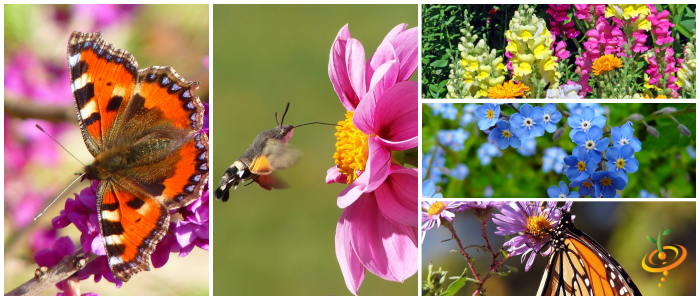
Includes a mix of the 23 of the most popular flower varieties known to attract Hummingbirds and Butterflies! Scatter this mix of seeds in your garden for the most beautiful assortment of flowers you've ever seen.
Wildflower establishment requires some important steps:
Site selection/preparation: It's important to address competition from weeds: pull, till, or use organic herbicides. If planting in the spring/summer you can wait for weeds to germinate, control and then plant the wildflower seeds.Seeding: You will want to have good seed to soil contact, broadcasting by hand is a good approach on small plot, may want to mix with an inert carrier, sand or other. Raking in and covering with soil 2-3 times seed thickness.Watering: During establishment for the first month, can be from rain in spring or supplement with irrigation.Timing: The best time to plant is in spring to early summer and even again in late fall.
This mix includes all of the following seed varieties:GENUS/ SPECIES
COMMON NAME
PLANT TYPE
PLANT HEIGHT (inches)
FLOWER COLORS
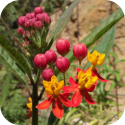
1. Asclepias tuberosa
Butterfly Milkweed
Perennial
24 to 36
Orange

2. Aquilegia caerulea
Mrs. Scott Elliot
Perennial
24 to 36
Yellow/Red/Violet/Blue

3. Antirrhinum tetra
Snapdragon
Annual
24 to 36
Lavender/Yellow/Pink/White

4. Callistephus chinensis
Aster
Annual
24 to 36
Blue/Pink/White/Purple

5. Cosmos bipinnatus
Cosmos Sensation Mix
Annual
36 to 60
White/Pink/Crimson/Rose

6. Cynoglossum amabile
Chinese Forget Me Not
Annual/
Biannual18 to 20
Blue

7. Delphinium consolida
Larkspur Giant Imperial Mix
Annual
12 to 26
White/Pink/Blue/Violet

8. Digitalis purpurea
Foxglove
Biannual/
Perrenial24 to 48
Purple/Cream

9. Gilia tricolor
Bird's Eyes
Annual
12 to 18
Lavender-White

10. Lavatera trimestris
Treemallow
Annual
24 to 48
White/Pink

11. Linaria maroccana
Toadflax
Annual
12 to 24
Pink/Yellow/Violet

12. Lobularia maritima
Alyssum, Carpet of Snow
Annual
8 to 16
White

13. Lychnis chalcedonica
Maltese Cross
Perennial
24 to 36
Scarlet

14. Mirabilis jalapa
Four O'clock
Tender
Perennial12 to 24
Red/Pink/Yellow.White

15. Monarda citriodora
Lemon Mint
Annual
12 to 24
Lavender/White

16. Nicotiana alata
Tobacco Plant
Annual
12 to 24
Red/White/Green/Yellow

17. Papaver rhoeas
Red Corn Poppy
Annual
12 to 30
Red

18. Penstemon strictus
Gloxinia Penstemon
Perennial
24 to 36
Blue

19. Salvia coccinea
Scarlet Sage
Annual/
Perennial12 to 24
Red

20. Silene armeria
Catchfly
Annual/
Biannual16 to 22
Pink

21. Tagetes erecta
Marigold Crackerjack
Annual
24 to 36
Yellow/Orange

22. Tropaeolum majus
Nasturtium Dwarf Jewel
Annual
12 to 36
Red/Yellow/Orange/Pink

23. Zinnia elegans
Zinnia
Annual
12 to 36
White/Purple/Yellow/Orange/Red
Wildflowers - Fragrant Flower Scatter Garden Seed Mix
From $499 USDUnit price /UnavailableDescription
 Includes a mix of 18 popular fragrant flower varieties and colors. Scatter this mix of seeds in your garden and enjoy the most fragrant flower assortment you've ever smelt.Wildflower establishment requires some important steps:- Site selection/preparation: It's important to address competition from weeds: pull, till, or use organic herbicides. If planting in the spring/summer you can wait for weeds to germinate, control and then plant the wildflower seeds.
Includes a mix of 18 popular fragrant flower varieties and colors. Scatter this mix of seeds in your garden and enjoy the most fragrant flower assortment you've ever smelt.Wildflower establishment requires some important steps:- Site selection/preparation: It's important to address competition from weeds: pull, till, or use organic herbicides. If planting in the spring/summer you can wait for weeds to germinate, control and then plant the wildflower seeds.
- Seeding: You will want to have good seed to soil contact, broadcasting by hand is a good approach on small plot, may want to mix with an inert carrier, sand or other. Raking in and covering with soil 2-3 times seed thickness.
- Watering: During establishment for the first month, can be from rain in spring or supplement with irrigation.
- Timing: The best time to plant is in spring to early summer and even again in late fall.
This mix includes all of the following seed varieties:GENUS/SPECIES
COMMON NAME

Centaurea cyanus
Cornflower
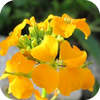
Cheiranthus allionii
Siberian Wallflower

Cynoglossum amabile
Chinese Forget Me Not

Dianthus barbatus
Sweet William
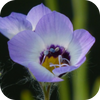
Gilia tricolor
Bird's Eyes

Iberis umbelleta
Candytuft

Lathyrus odoratus
Sweet Pea

Lavender Vera
Lavender

Lobularia maritima
Sweet Alyssum

Matthiola bicornis
Evening Scented Stock
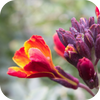
Mirabilis jalapa
Four O' Clock

Monarda punctata
Spotted Bee Balm
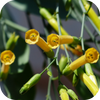
Nicotiana affinis
Tabacco mix
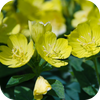
Oenothera lamarkiana
Evening Primrose

Reseda ordorata
Mignonette

Tagetes patula
Marigold Sparky

Tropaeulum majus
Nasturtium

Viola cornuta
Helen Mount
Wildflowers - Forever Pink Scatter Garden Seed Mix
From $499 USDUnit price /UnavailableDescription
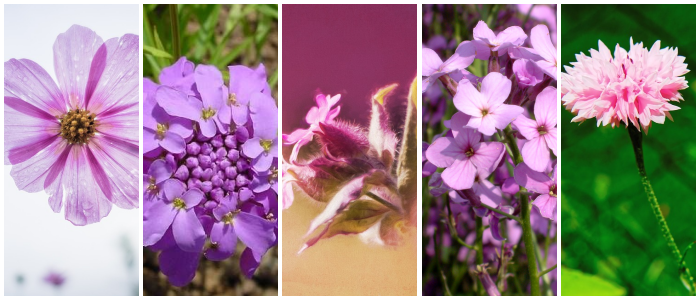 Includes a mix of 9 of the most vibrant and beautiful pink flower varieties. Scatter this mix in your garden and enjoy a beautiful assortment of pink flowers!Wildflower establishment requires some important steps:- Site selection/preparation: It's important to address competition from weeds: pull, till, or use organic herbicides. If planting in the spring/summer you can wait for weeds to germinate, control and then plant the wildflower seeds.
Includes a mix of 9 of the most vibrant and beautiful pink flower varieties. Scatter this mix in your garden and enjoy a beautiful assortment of pink flowers!Wildflower establishment requires some important steps:- Site selection/preparation: It's important to address competition from weeds: pull, till, or use organic herbicides. If planting in the spring/summer you can wait for weeds to germinate, control and then plant the wildflower seeds.
- Seeding: You will want to have good seed to soil contact, broadcasting by hand is a good approach on small plot, may want to mix with an inert carrier, sand or other. Raking in and covering with soil 2-3 times seed thickness.
- Watering: During establishment for the first month, can be from rain in spring or supplement with irrigation.
- Timing: The best time to plant is in spring to early summer and even again in late fall.
This mix includes all of the following seed varieties:GENUS/SPECIES
COMMON NAME

Centaurea cyanus
Cornflower Tall Pink

Clarkia amoena
Godetia Semi Dwf Mix

Cosmos bippinatus
Pinkie Dwarf

Hesperis matronalis
Purple Dame's Rocket

Iberis umbellata
Dwf. Candytuft Fairy Bqt.

Lavatera trimestris
Tree Mallow

Monarda citriodora
Lemon Mint

Silene armeria
Catchfly

Silene pendula
Nodding Catchfly
Wildflowers - Exotic Mountain Scatter Garden Seed Mix
From $499 USDUnit price /UnavailableDescription
 Includes a mix of 17 of the most vibrant and beautiful flower varieties you've ever seen. Scatter this mix in your garden. Specifically for elevations above 7,000 feet in western continental U.S.Wildflower establishment requires some important steps:- Site selection/preparation: It's important to address competition from weeds: pull, till, or use organic herbicides. If planting in the spring/summer you can wait for weeds to germinate, control and then plant the wildflower seeds.
Includes a mix of 17 of the most vibrant and beautiful flower varieties you've ever seen. Scatter this mix in your garden. Specifically for elevations above 7,000 feet in western continental U.S.Wildflower establishment requires some important steps:- Site selection/preparation: It's important to address competition from weeds: pull, till, or use organic herbicides. If planting in the spring/summer you can wait for weeds to germinate, control and then plant the wildflower seeds.
- Seeding: You will want to have good seed to soil contact, broadcasting by hand is a good approach on small plot, may want to mix with an inert carrier, sand or other. Raking in and covering with soil 2-3 times seed thickness.
- Watering: During establishment for the first month, can be from rain in spring or supplement with irrigation.
- Timing: The best time to plant is in spring to early summer and even again in late fall.
This mix includes all of the following seed varieties:GENUS/SPECIES
COMMON NAME
HEIGHT
TYPE
COLOR
Aquilegia caerulea
Columbine
24"-36"
P
Y, R, V, B

Centaurea cyanus
Cornflower
12"-36"
A
B or mix

Cheiranthus allionii
Siberian Wallflower
16"-24"
B/P
O

Chrysanthemum maximum
Shasta Daisy
16"-24"
P
W

Coreopsis tinctoria
Plains Coreopsis
12"-36"
A
Y, M

Dianthus barbatus
Sweet William
12"-24"
P
W,P,R

Dimorphotheca aurantiaca
African Daisy
8"-16"
A
O,S,W

Eschscholtzia californica
California Poppy
12"-18"
A
Y,O

Gaillardia aristata
Perennial Gaillardia
18"-30"
PA
Y,R

Gypsophila elegans
Annual Baby's Breath
8"-18"
P
W

Linum lewisii
Blue Flax
18"-30"
B/P
B

Lobularia maritima
Sweet Alyssum
8"-16"
P
W

Oenothera lamarckiana
Evening Primrose
24"-60"
B/P
Y

Penstemon strictus
Rocky Mtn. Penstemon
24"-36"
P
B

Ratibida columnifera
Prairie Coneflower
12"-36"
B/P
R,Y

Rudbeckia hirta
Black Eyed Susan
12"-36"
A/B/P
Y

Silene armeria
Catchfly
16"-22"
A
P
A-Annual
52%
Y- YELLOW
P-Perennial
24%
R-Red
B-Biennal
24%
V-Violet
B-Blue
W-White
M-Maroon
O-Orange
P-Purple
S-Salmon
Wildflowers - Dryland Scatter Garden Seed Mix
From $499 USDUnit price /UnavailableDescription
 Includes a mix of 21 different beautiful flower varieties. Cover dry spaces with drought tolerant wildflowers! Mix includes annuals and perennials. Easy to grow and require little maintenance
Includes a mix of 21 different beautiful flower varieties. Cover dry spaces with drought tolerant wildflowers! Mix includes annuals and perennials. Easy to grow and require little maintenance
Wildflower establishment requires some important steps:- Site selection/preparation: It's important to address competition from weeds: pull, till, or use organic herbicides. If planting in the spring/summer you can wait for weeds to germinate, control and then plant the wildflower seeds.
- Seeding: You will want to have good seed to soil contact, broadcasting by hand is a good approach on small plot, may want to mix with an inert carrier, sand or other. Raking in and covering with soil 2-3 times seed thickness.
- Watering: During establishment for the first month, can be from rain in spring or supplement with irrigation.
- Timing: The best time to plant is in spring to early summer and even again in late fall.This mix includes the following:
Genus/Species
Common Name
HEIGHT
TYPE
COLOR

Centaurea cyanus
Cornflower
36"
A
Blue

Cheiranthus allionii
Siberian Wallflower
18"
B
Orange

Chrysanthemum maximum
Shasta Daisy
36"
P
White
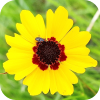
Coreopsis tinctoria
Plains Coreopsis
36"
A
Yellow/Red

Dianthus barbatus
Sweet William
24"
B
Mix

Dimorphotheca auranantiaca
African Daisy
12"
A
Yellow

Echinacea purpurea
Purple Coneflower
36"
P
Purple

Eschscholtzia californica
California Poppy
12"
A
Orange

Gaillardia aristata
Perennial Gaillardia
24"
P
Yellow/Red

Gaillardia pulchella
Annual Gaillardia
24"
A
Yellow/Red

Gypsophila elegans
Annual Baby's Breath
24"
A
White

Linaria maroccana
Spurred Snapdragon
24"
A
Mix

Linum lewisii
Blue Flax
24"
P
Blue

Lobularia maritima
Sweet Alyssum
10"
A
White

Oenothera lamarckiana
Evening Primrose
36"
B
Yellow

Papaver rhoeas
Corn Poppy
24"
A
Red

Penstemon strictus
Rocky Mtn. Penstemon
36"
P
Blue

Ratibida columnifera
Prairie Coneflower
24"
P
Red

Rudbeckia hirta
Black Eyed Susan
36"
A/B/P
Gold

Rudbeckia hirta
Gloriosa Daisy
36"
A/B/P
Yellow/Red

Silene armeria
Catchfly
18"
A
Pink
ANNUAL
64%
BI-ANNUAL
11%
PERENNIAL
25%
Wildflowers - Deer Resistant Scatter Garden Seed Mix
From $499 USDUnit price /UnavailableDescription
 Includes a mix of the 22 of the most popular flower varieties that deer are known to stay away from. Scatter this mix of seeds in your garden and keep the deer away.Wildflower establishment requires some important steps:- Site selection/preparation: It's important to address competition from weeds: pull, till, or use organic herbicides. If planting in the spring/summer you can wait for weeds to germinate, control and then plant the wildflower seeds.
Includes a mix of the 22 of the most popular flower varieties that deer are known to stay away from. Scatter this mix of seeds in your garden and keep the deer away.Wildflower establishment requires some important steps:- Site selection/preparation: It's important to address competition from weeds: pull, till, or use organic herbicides. If planting in the spring/summer you can wait for weeds to germinate, control and then plant the wildflower seeds.
- Seeding: You will want to have good seed to soil contact, broadcasting by hand is a good approach on small plot, may want to mix with an inert carrier, sand or other. Raking in and covering with soil 2-3 times seed thickness.
- Watering: During establishment for the first month, can be from rain in spring or supplement with irrigation.
- Timing: The best time to plant is in spring to early summer and even again in late fall.
This mix includes all of the following seed varieties:GENUS/SPECIES
COMMON NAME
TYPE
HEIGHT
COLOR

Achillea millefolium
Yarrow
P
12 to 36
White

Aquilegia caerulea
Columbine
p
24 to 36
Yellow'/Red/Violet/Blue

Centaurea cyanus
Bachelor Buttons
A
12 to 36
Blue or Mix

Chrysanthemum maximum
Shasta Daisy
P
16 to 24
White

Clarkia amoena
Godetia
A
8 to 14
Pink/White

Coreopsis lanceolata
Lance Leaf Coreopsis
P
18 to 36
Yeloow

Delphinium consolida
Larkspur
A
12 to 36
Whie/Pink/Blue/Violet

Digitalis purpurea
Foxglove
B/P
24 to 48
Purple/Cream

Echinacea purpurea
Purple Coneflower
P
24 to 36
Purple

Eschscholzia californica
California Poppy
TP
12 to 18
Yellow/Orange

Gaillardia aristata
Blanketflower
P
18 to 30
Yellow-Red

Iberis umbellata
Candytuft
A
12 to 18
White/Pink/Violet

Liatris spicata
Gayfeather
P
24 to 48
Purple

Lupinus perennis
Lupine
P
12 to 36
Blue

Monarda citriodora
Lemon Mint
A
12 to 24
Lavander/White

Papaver rhoeas
Red shirley poppy
A
12 to 30
Red

Papaver rhoeas
Mixed Shirley Poppy
A
12 to 30
White/Pink/Red

Ratibida columnifera
Red Prairie Coneflower
B/P
12 to 36
Red/Yellow

Ratibida columnifera
Yellow Prairie Coneflower
B/P
12 to 36
Yellow

Rudbeckia hirta
Black Eyed Susan
A/B/P
12 to 36
Yellow

Salvia coccinea
Scarlet Sage
A/P
12 to 24
Red

Viscaria occulata
Soapwort
A
9 to 12
Pink
Annual
41%
PERENNIAL
59%
Wildflowers - Cosmos Flower Scatter Garden Seed Mix
From $499 USDUnit price /UnavailableDescription
Includes a mix of 7 popular cosmos flower varieties. Scatter this mix in your garden and enjoy a beautiful assortment of cosmos flowers!
Wildflower establishment requires some important steps:
- Site selection/preparation: It's important to address competition from weeds: pull, till, or use organic herbicides. If planting in the spring/summer you can wait for weeds to germinate, control and then plant the wildflower seeds.
- Seeding: You will want to have good seed to soil contact, broadcasting by hand is a good approach on small plot, may want to mix with an inert carrier, sand or other. Raking in and covering with soil 2-3 times seed thickness.
- Watering: During establishment for the first month, can be from rain in spring or supplement with irrigation.
- Timing: The best time to plant is in spring to early summer and even again in late fall.
This mix includes all of the following seed varieties:GENUS/SPECIES
COMMON NAME
Cosmos bippinatus
Cosmos, Sensation Mix
Cosmos bippinatus
Dazzler
Cosmos bippinatus
Gloria
Cosmos bippinatus
Picotee
Cosmos bippinatus
Pinkie
Cosmos bippinatus
Purity
Cosmos sulphureus
Sulphur Cosmos
Wildflowers - Coneflower Scatter Garden Seed Mix
From $499 USDUnit price /UnavailableDescription
 Includes a mixture of 6 popular coneflower varieties. Scatter this mix in your garden and enjoy a beautiful assortment of coneflowers!
Includes a mixture of 6 popular coneflower varieties. Scatter this mix in your garden and enjoy a beautiful assortment of coneflowers!Wildflower establishment requires some important steps:
- Site selection/preparation: It's important to address competition from weeds: pull, till, or use organic herbicides. If planting in the spring/summer you can wait for weeds to germinate, control and then plant the wildflower seeds.
- Seeding: You will want to have good seed to soil contact, broadcasting by hand is a good approach on small plot, may want to mix with an inert carrier, sand or other. Raking in and covering with soil 2-3 times seed thickness.
- Watering: During establishment for the first month, can be from rain in spring or supplement with irrigation.
- Timing: The best time to plant is in spring to early summer and even again in late fall.
This mix includes all of the following seed varieties:GENUS/SPECIES
COMMON NAME

Echinacea purpurea
Purple Coneflower

Echinacea palladia
Pale Purple Coneflower

Rudbeckia amplexicaulis
Clasping Coneflower

Ratibida columnifera
Red Mexican Hat

Ratibida columnifera
Yellow Prairie Coneflower

Ratibida pinnata
Greyheaded Coneflower
Wildflowers - California Native Scatter Garden Seed Mix
From $499 USDUnit price /UnavailableDescription
 Includes a mix of 24 popular Native California Wildflower varieties. Scatter this mix in your garden and enjoy a beautiful assortment of Native California Wildflowers.Wildflower establishment requires some important steps:- Site selection/preparation: It's important to address competition from weeds: pull, till, or use organic herbicides. If planting in the spring/summer you can wait for weeds to germinate, control and then plant the wildflower seeds.
Includes a mix of 24 popular Native California Wildflower varieties. Scatter this mix in your garden and enjoy a beautiful assortment of Native California Wildflowers.Wildflower establishment requires some important steps:- Site selection/preparation: It's important to address competition from weeds: pull, till, or use organic herbicides. If planting in the spring/summer you can wait for weeds to germinate, control and then plant the wildflower seeds.
- Seeding: You will want to have good seed to soil contact, broadcasting by hand is a good approach on small plot, may want to mix with an inert carrier, sand or other. Raking in and covering with soil 2-3 times seed thickness.
- Watering: During establishment for the first month, can be from rain in spring or supplement with irrigation.
- Timing: The best time to plant is in spring to early summer and even again in late fall.
This mix includes all of the following seed varieties:GENUS/SPECIES
COMMON NAME
TYPE
COLOR
Height

Achillea millefolium
White Yarrow
P
White
12 to 36

Alyssum maritimum
Sweet Alyssum
A
White
8 to 16

Centaurea cyanus
Cornflower
A
Blue
12 to 36

Cheiranthus allionii
Siberian Wallflower
B
Orange
10 to 18

Chyrsanthemum coronarium
Garland Daisy
A
White/Yellow
36 to 48

Chrysanthemum maximum
Shasta Daisy
P
White
16 to 24

Clarkia amoena
Farewell To Spring
A
Pink/White
8 to 14

Clarkia elegans
Clarkia
A
Pink/White
18 to 30

Coreopsis lanceolata
Lance-Leaf Coreopsis
P
Yellow
18 to 36

Coreopsis tinctoria
Plains Coreopsis
A
Yellow
12 to 36

Cynoglossum firmament
Chinese Forget Me Not
A
Blue
18 to 24

Delphinuim consolida
Larkspur
A
Mix
12 to 36

Eschscholtzia californica
California Poppy
A
Orange
12 to 18

Gypsophila elegans
Annual Baby's Breath
A
White
8 to 18

Linaria maroccana
Spurred Snapdragon
A
Mix
12 to 24

Linum lewisii
Blue Flax
P
Blue
18 to 30
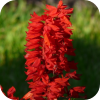
Linum grandiflorum rubrum
Scarlet Flax
A
Scarlet
12 to 36

Lupinus perennis
Perennial Lupine
P
Blue
12 to 36

Nemophila menziesii
Baby Blue Eyes
A
Blue
4 to 12

Oenothera lamarckiana
Evening Primrose
B
Yellow
24 to 36

Papaver rhoeas
Corn Poppy
A
Red/Pink
12 to 30

Phacelia campanularia
California Bluebell
A
Blue
8 to 20

Rudbeckia hirta
Black Eyed Susan
B
Gold
12 to 36

Silene armeria
Catchfly
A
Purple
16 to 22
A = ANNUL 74%
B = BIENNIAL 8%
P = PERENNIAL 18%
Wildflowers - Blues Brothers Seed Mix
From $499 USDUnit price /UnavailableDescription
Plant this mix to grow some of the most beautiful blue-colored flowers you've ever seen!
Wildflower establishment requires some important steps:
- Site selection/preparation: It's important to address competition from weeds: pull, till, or use organic herbicides. If planting in the spring/summer you can wait for weeds to germinate, control and then plant the wildflower seeds.
- Seeding: You will want to have good seed to soil contact, broadcasting by hand is a good approach on small plot, may want to mix with an inert carrier, sand or other. Raking in and covering with soil 2-3 times seed thickness.
- Watering: During establishment for the first month, can be from rain in spring or supplement with irrigation.
- Timing: The best time to plant is in spring to early summer and even again in late fall.
This mix includes all of the following seed varieties:
GENUS/SPECIES COMMON NAME TYPE HEIGHT COLOR 
Centaurea cyanus Bachelor Button, Jubilee Gem or Cornflower Annual 12- 36 Inches Blue 
Centaurea cyanus Chinese Forget-Me-Not or Chinese Hounds Tongue Perennial 18-24 Inches Blue 
Linum lewisii Blue Flax Perennial 18-30 Inches Blue 
Ipomoea alba Morning Glory, Heavenly Blue Annual 8 - 10 Feet Blue 
Lupinus angustifolius Blue Lupine Perennial 12-13 Inches Blue 
Phacelia campanularia California Blue Bells, Desertbells, Desert Bluebells, California-Bluebell, Desert Scorpionweed, and Desert Canterbury Bells. Annual 18-20 Inches Blue 
Nigella damascena Love In a Mist Annual 15 Inches Blue 
Gilia capitata Globe Gilia, Blue-Thimble-Flower, Bluehead Gilia, or Blue Field Gilia Annual 12-24 Inches Blue 
Nemophila menziesii Baby Blue Eyes Annual 6 Inches Blue Wildflowers - Beneficial Insect Garden Seed Mix
From $499 USDUnit price /UnavailableDescription
 Plant this mix to attract beneficial insects such as ladybugs, lacewings, ground beetles and other insects that feed on pests.
Plant this mix to attract beneficial insects such as ladybugs, lacewings, ground beetles and other insects that feed on pests.
Wildflower establishment requires some important steps:- Site selection/preparation: It's important to address competition from weeds: pull, till, or use organic herbicides. If planting in the spring/summer you can wait for weeds to germinate, control and then plant the wildflower seeds.
- Seeding: You will want to have good seed to soil contact, broadcasting by hand is a good approach on small plot, may want to mix with an inert carrier, sand or other. Raking in and covering with soil 2-3 times seed thickness.
- Watering: During establishment for the first month, can be from rain in spring or supplement with irrigation.
- Timing: The best time to plant is in spring to early summer and even again in late fall.
This mix includes all of the following seed varieties:GENUS/SPECIES
COMMON NAME
TYPE
HEIGHT
COLOR

Achillea millefolium
White Yarrow
P
12 to 36
White

Gypsophila elegans
Baby's Breath
A
8 to 18
White

Iberis umbellata
Candytuft
A
12 to 18
White/Pink/Violet

Layia platyglossa
Tidy Tips
A
6 to 12
Yellow-White

Lobularia maritima
Alyssum
TP
8 to 16
White

Nemophila menziesii
Baby Blue Eyes
A
4 to 12
Blue

Phacelia campanularia
California Bluebells
A
8 to 20
Blue

Trifolium repens
White Dutch Clover
P
4 to 10
White
Annual
50%
Perennial
50%
Wildflowers - Bee Scatter Garden Seed Mix
From $499 USDUnit price /UnavailableDescription
Plant this mix to attract bees and other beneficial pollinators. =)

Wildflower establishment requires some important steps:- Site selection/preparation: It's important to address competition from weeds: pull, till, or use organic herbicides. If planting in the spring/summer you can wait for weeds to germinate, control and then plant the wildflower seeds.
- Seeding: You will want to have good seed to soil contact, broadcasting by hand is a good approach on small plot, may want to mix with an inert carrier, sand or other. Raking in and covering with soil 2-3 times seed thickness.
- Watering: During establishment for the first month, can be from rain in spring or supplement with irrigation.
- Timing: The best time to plant is in spring to early summer and even again in late fall.Wildflowers - Annual Cut Flower Scatter Garden Seed Mix
From $499 USDUnit price /UnavailableDescription
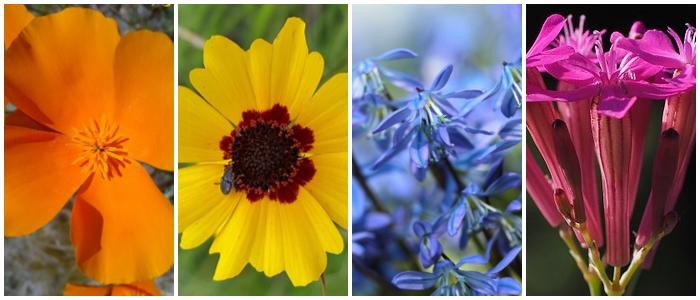 Includes a mix of 25 popular annual flower varieties that will produce a beautiful assortment of flowers suitable for cutting. The mix includes many of the flowers found in floral stores. This annual flower mix will blossom all-year-long creating a bountiful source of flowers.
Includes a mix of 25 popular annual flower varieties that will produce a beautiful assortment of flowers suitable for cutting. The mix includes many of the flowers found in floral stores. This annual flower mix will blossom all-year-long creating a bountiful source of flowers. Scatter this mix of seeds in your garden for the most beautiful assortment of flowers you've ever seen.
Wildflower establishment requires some important steps:- Site selection/preparation: It's important to address competition from weeds: pull, till, or use organic herbicides. If planting in the spring/summer you can wait for weeds to germinate, control and then plant the wildflower seeds.
- Seeding: You will want to have good seed to soil contact, broadcasting by hand is a good approach on small plot, may want to mix with an inert carrier, sand or other. Raking in and covering with soil 2-3 times seed thickness.
- Watering: During establishment for the first month, can be from rain in spring or supplement with irrigation.
- Timing: The best time to plant is in spring to early summer and even again in late fall.
This mix includes all of the following seed varieties:GENUS/SPECIES
COMMON NAME
TYPE
HEIGHT
COLOR

Callistephus chinensis
Aster
A
12 to 36
Blue/Pink/White/Purple

Calendual officinalis
Pot Marigold
A
12 to 24
Yellow/Orange/Cream

Centaurea cyanus
Bachelor Button, Polka Dot Mix
A
12 to 36
Mix

Clarkia amoena
Godetia
A
8 to14
Pink/White

Clarkia elegans
Clarkia
A
18 to 30
Pink/Lavender

Coreopsis tinctoria
Plains Coreopsis
A
12 to 36
Yellow-Maroon

Cosmos bipinnatus
Cosmos, Dwarf Sensation
A
36 to 60
White/Pink/Crimson/Rose

Cynoglossum firmament
Chinese Forget Me Not
A/B
18 to 24
Blue

Delphinium ajacis
Larkspur
A
12 to 36
White/Pink/Blue/Violet

Dimorphotheca aurantiaca
African Daisy
A
8 to16
Orange/Salmon/White

Eschscholzia californica
Poppy, Mission Bells
TP
12 to 18
Yellow/Orange

Gaillardia pulchella
Annual Gaillardia
A
12 to 24
Yellow-Red

Gypsophila elegans
Baby's Breath
A
8 to 18
White

Helianthus annuus
Sunflower
A
24 to 72
Yellow

Helichrysum monstrosum
Strawflower mixed
A
24 to 36
Yellow/White/Red/Pink

Iberis umbellata
Candytuft
A
12 to 18
White/Pink/Violet

Lavateria trimestris mix
Tree mallow
A
24 to 48
White/Pink

Lobularia maritima
Alyssum, tall Sweet
TP
8 to 16
White

Oenotheria lamarckiana
Evening Primrose
B/P
24 to 60
Yellow

Papaver rhoeas
Shirley Poppy
A
12 to 30
White/Pink/red

Phacelia campanularia
California Bluebells
A
8 to 20
Blue

Rubeckia hirta
Black Eyed Susan
A/B/P
12 to 36
Yellow

Silene armeria
Catchfly
A/B
16 to 22
Pink

Tagetes erecta
Marigold
A
12 to 16
Yellow/Orange/Maroon

Zinnia elegans
Zinnia
A
12 to 36
White/Purple/Yellow/Orange.Red
A-Annual
75%
B-Biennial
18%
TP-Tender Perennial
7%
Wildflowers - All Perennial Scatter Garden Seed Mix
From $499 USDUnit price /UnavailableDescription
 Includes a mix of 16 popular perennial flower varieties and colors. Scatter this mix of seeds in your garden and enjoy a beautiful assortment of flowers for multiple years.
Includes a mix of 16 popular perennial flower varieties and colors. Scatter this mix of seeds in your garden and enjoy a beautiful assortment of flowers for multiple years.A perennial plant or simply perennial is a plant that lives for more than two years. The term is often used to differentiate a plant from shorter-lived annuals and biennials. Wikipedia
Wildflower establishment requires some important steps:- Site selection/preparation: It's important to address competition from weeds: pull, till, or use organic herbicides. If planting in the spring/summer you can wait for weeds to germinate, control and then plant the wildflower seeds.
- Seeding: You will want to have good seed to soil contact, broadcasting by hand is a good approach on small plot, may want to mix with an inert carrier, sand or other. Raking in and covering with soil 2-3 times seed thickness.
- Watering: During establishment for the first month, can be from rain in spring or supplement with irrigation.
- Timing: The best time to plant is in spring to early summer and even again in late fall.
This mix includes all of the following seed varieties:GENUS/SPECIES
COMMON NAME
HEIGHT
COLOR

Achillea millefolium
White Yarrow
24-36"
W

Aquilegia vulgaris
Columbine
10-18"
R/V/B

Aster novae angliae
New England Aster
24-36"
B/P/W/P

Cheiranthus allionii
Siberian Wallflower
10-18"
O

Chrysanthemum maximum
Shasta Daisy
16-24"
W

Coreopsis lanceolata Dwarf
Lance-Leaf Coreopsis
18-36"
Y

Dianthus barbatus
Sweet William
12-24"
W/P/R

Echinacea purpurea
Purple Coneflower
24-36"
P

Gaillardia aristata
Blanketflower
18-30"
Y/R

Liatris spicata
Gayfeather
24-48"
P

Linum lewisii
Blue Flax
18-30"
B

Lupinus perennis
Lupine
12-36"
B

Oenothera missouriensis
Dwarf Evening Primrose
8-12"
Y

Ratibida columnifera
Mexican Hat
12-36"
R/Y

Ratibida columnifera
Prairie Coneflower
12-36"
Y

Rudbeckia hirta
Black Eyed Susan
18-30"
Y
W-White
R-Red
V-Violet
B-Blue
Y-Yellow
O-Orange
P-Purple
Wildflowers - All Annual Scatter Garden Seed Mix
From $499 USDUnit price /UnavailableDescription
 Includes a mix of 21 popular annual flower varieties and colors. Scatter this mix of seeds in your garden and enjoy a beautiful assortment of flowers all year.Wildflower establishment requires some important steps:- Site selection/preparation: It's important to address competition from weeds: pull, till, or use organic herbicides. If planting in the spring/summer you can wait for weeds to germinate, control and then plant the wildflower seeds.
Includes a mix of 21 popular annual flower varieties and colors. Scatter this mix of seeds in your garden and enjoy a beautiful assortment of flowers all year.Wildflower establishment requires some important steps:- Site selection/preparation: It's important to address competition from weeds: pull, till, or use organic herbicides. If planting in the spring/summer you can wait for weeds to germinate, control and then plant the wildflower seeds.
- Seeding: You will want to have good seed to soil contact, broadcasting by hand is a good approach on small plot, may want to mix with an inert carrier, sand or other. Raking in and covering with soil 2-3 times seed thickness.
- Watering: During establishment for the first month, can be from rain in spring or supplement with irrigation.
- Timing: The best time to plant is in spring to early summer and even again in late fall.
This mix includes all of the following seed varieties:GENUS/SPECIES
COMMON NAME
TYPE
HEIGHT
COLOR
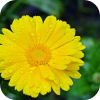
Calendula officinalis
Calendula
A
12 to 24
Yello/Orange/Cream

Centaurea cyanus
Bachelor Button
A
12 to 36
Blue or Mix

Cheiranthus allionii
Siberian Wallflower
B/P
10 to 18
Orange

Coreopsis tinctoria
Plains Coreopsis
A
12 to 36
Yellow-Maroon

Cosmos bipinnatus
Cosmos
A
36 to 60
White/Pink/Crimson/Rose

Delphinium ajacis
Rocket Larkspur
A
12 to 36
White/Pink/Blue/Violet

Dimorphotheca aurantiaca
African Daisy
A
8 to 16
Orange/Salmon/White

Eschscholtzia californica
California Poppy
TP
12 to 18
Yellow/Orange

Gaillardia pulchella
Indian Blanket
A
12 to 24
Yellow-Red

Gilia tricolor
Bird's Eyes
A
12 to 18
Lavender-White

Gypsophila elegans
Baby's Breath
A
8 to 18
White

Iberis umbellata
Candytuft
A
12 to 18
White/Pink/Violet

Linaria maroccana
Spurred Snapdragon N. Lights
A
12 to 124
Pink/Yellow/Violet

Linum grandiflorum rubrum
Scarlet Flax
A
12 to 36
Scarlet

Lobularia maritima
Sweet Alyssum
TP
8 to 16
White

Lupinus hartwegii
Lupine
A
12 to 24
Mix

Oenothera lamarckiana
Evening Primrose
B/P
24 to 60
Yellow

Papaver rhoeas
Corn Poppy
A
12 to 30
White/Pink/Red

Phacelia campanularia
California Bluebells
A
8 to 20
Blue

Rudbeckia hirta
Black Eyed Susan
A/B/P
12 to 36
Yellow

Silene armeria
Catchfly
A/B
16 to 22
Pink
Watermelon - Tendersweet (Orange-flesh)
From $299 USDUnit price /UnavailableDescription
- The Tendersweet Watermelon is a classic heirloom variety with dark orange flesh
- Very sweet and delicious - Grows up to 35 lbs!
-
Days to Maturity | 90 days
-
Watermelons are heat-loving plants that need lots of sun. They grow on a long vine, so make sure to give them plenty of space to roam around.
- The Tendersweet Watermelon is a classic heirloom variety with dark orange flesh
Watermelon - Moon & Stars (Yellow-flesh)
From $349 USDUnit price /UnavailableDescription
- The Moon & Stars Watermelon dark green rind and bright yellow spots
- Yellow spots are very unique and can be small or large in size
- All American classic heirloom watermelon - Deep yellow flesh
- Grows over 40 lbs
-
Days to Maturity | 90 days
-
Watermelons are heat-loving plants that need lots of sun. They grow on a long vine, so make sure to give them plenty of space to roam around.
- The Moon & Stars Watermelon dark green rind and bright yellow spots
Watermelon - Moon & Stars (Red-flesh)
From $299 USDUnit price /UnavailableDescription
- The Moon & Stars Watermelon dark green rind and bright yellow spots.
- Yellow spots are very unique and can be small or large in size.
- All American classic heirloom watermelon. - Deep red flesh.
- Grows over 40 lbs!
-
Day to Maturity | 90 days
- Watermelons are heat-loving plants that need lots of sun. They grow on a long vine, so make sure to give them plenty of space to roam around.
Follow SeedsNow.com's board Watermelon on Pinterest. - The Moon & Stars Watermelon dark green rind and bright yellow spots.
- From $299 USDUnit price /Unavailable
Description
- The Jubilee is a very long shaped watermelon
- Deep red flesh
- Grows up to appx. 40 lbs
-
Days to Maturity | 90 days
-
Watermelons are heat-loving plants that need lots of sun. They grow on a long vine, so make sure to give them plenty of space to roam around.
Follow SeedsNow.com's board Watermelon on Pinterest. - The Jubilee is a very long shaped watermelon
- From $299 USDUnit price /Unavailable
Description
- Cal Sweet is one of the sweetest tasting and most popular watermelon varieties available
- A commercial grower favorite - sells well at farmers markets
- Dark green stripes on the exterior with bright red flesh
- Grows to appx. 35 lbs
- Perfect-sized watermelon for any-sized backyard
-
Days to Maturity | 90 days
-
Watermelons are heat-loving plants that need lots of sun. They grow on a long vine, so make sure to give them plenty of space to roam around.
Follow SeedsNow.com's board Watermelon on Pinterest. - Cal Sweet is one of the sweetest tasting and most popular watermelon varieties available
Tomato - San Marzano (Indeterminate)
From $299 USDUnit price /UnavailableDescription
Can a tomato be a celebrity? Ask the San Marzano Tomato—if you can get past its bodyguards. One commercial grower proclaims it the “gold standard for taste.” Martha Stewart devoted an entire blog post to it. Certified tomatoes from Italy are regulated. It even has its own Wikipedia page. But at the end of the day, it’s still just a tomato. One that’s longer and thinner than other plum/paste tomatoes, with exceptional tomato flavor, meaty and thin skinned for slicing, few seeds and fleshy for saucing, and very high yields. We’ve joined the fan club. How about you?
- Sweet, intense flavor
- Very high yields
- Compact plant
- Good fresh or cooked
SEED PLANTING TIPS
- Botanical name: Solanum lycopersicum
- Growth type: Indeterminate, trellis support, regular pruning
- Tomato size: Medium
- Depth to plant seeds: .25" deep
- Spacing between plants: 24" apart
- Spacing between rows: 36"-48" apart
- Days to germinate (sprout): 7-14 days
- Germination soil temps: 75F-95F
- Soil needs: 6.0-6.5 pH
- Sun needs: Full sun
- Frost hardy: No
- Planting season: Spring, summer
- # of plants per sq. ft.: Appx. 1 plant per 2 sq. ft.
- Days to maturity: 75-90 days
Click here to view our full Tomato grow guide
Good companion plants: Basil, Borage, Onion, Parsley, Pepper
Tomato - Oxheart, Orange (Indeterminate)
From $299 USDUnit price /UnavailableDescription
The Orange Oxheart Tomato is what you call eye candy. High yields of deep orange heart-shaped fruits glowing against a backdrop of emerald green leaves provide a stunning visual in any garden. They’re tasty, too. Meaty, fruity, juicy slicers grow and ripen all summer long, giving you more time for more eyefuls.
You may also like: Pink Oxheart Tomatoes ⟐ Yellow Oxheart Tomatoes- Sweet and juicy
- Small seed core
- High yields
- Good fresh and cooked
SEED PLANTING TIPS
- Botanical name: Solanum lycopersicum
- Growth type: Indeterminate, trellis support, regular pruning
- Tomato size: Large (1-2 lbs.)
- Depth to plant seeds: .25" deep
- Spacing between plants: 24" apart
- Spacing between rows: 36"-48" apart
- Days to germinate (sprout): 7-14 days
- Germination soil temps: 75F-95F
- Soil needs: 6.0-6.5 pH
- Sun needs: Full sun
- Frost hardy: No
- Planting season: Spring, summer
- # of plants per sq. ft.: Appx. 1 plant per 2 sq. ft.
- Days to maturity: 75-85 days
Click here to view our full Tomato grow guide
Good companion plants: Basil, Borage, Onion, Parsley, Pepper
Tomato - Marion (Indeterminate)
From $399 USDUnit price /UnavailableDescription
The Marion Tomato is the perfect tomato for Southern gardens—tolerant of heat and humidity, resistant to cracking and disease, producing gobs of scarlet globes that ripen mid-season, and with just enough sweetness and acidity to know you’re eating the perfect tomato. A great-tasting and versatile fruit for sauce and paste or salt and pepper.
- Heat tolerant
- Early producer
- High yields
- Good for Southern gardens
SEED PLANTING TIPS
- Botanical name: Solanum lycopersicum
- Growth type: Indeterminate, trellis support, regular pruning
- Tomato size: Medium
- Depth to plant seeds: .25" deep
- Spacing between plants: 24" apart
- Spacing between rows: 36"-48" apart
- Days to germinate (sprout): 7-14 days
- Germination soil temps: 75F-95F
- Soil needs: 6.0-6.5 pH
- Sun needs: Full sun
- Frost hardy: No
- Planting season: Spring, summer
- # of plants per sq. ft.: Appx. 1 plant per 2 sq. ft.
- Days to maturity: 75-80 days
Click here to view our full Tomato grow guide
Good companion plants: Basil, Borage, Onion, Parsley, Pepper
Tomato - Calypso (Indeterminate)
From $199 USDUnit price /UnavailableDescription
The Calypso Tomato is often referred to as a “common salad tomato". Calypso is tolerant of heat and humidity, and great for Southern gardens.
- Common tomato flavor
- Common tomato color
- Heat tolerant
- Great for Southern gardens
SEED PLANTING TIPS
- Botanical name: Solanum lycopersicum
- Growth type: Indeterminate, trellis support, regular pruning
- Tomato size: Medium
- Depth to plant seeds: .25" deep
- Spacing between plants: 24" apart
- Spacing between rows: 36"-48" apart
- Days to germinate (sprout): 7-14 days
- Germination soil temps: 75F-95F
- Soil needs: 6.0-6.5 pH
- Sun needs: Full sun
- Frost hardy: No
- Planting season: Spring, summer
- # of plants per sq. ft.: Appx. 1 plant per 2 sq. ft.
- Days to maturity: 75-80 days
Good companion plants: Basil, Borage, Onion, Parsley, Pepper
Tomato - Bradley (Indeterminate)
From $299 USDUnit price /UnavailableDescription
The Bradley Tomato is a sweet little pink tomato. By sweet, we mean lightly sweet and slightly acidic. By little, well, that’s just what you say when you describe something darling; it’s a medium-sized fruit. As for pink, it’s a dark pink. To be precise, it’s a lightly sweet and slightly acidic medium-sized dark pink tomato. A reliable producer with good-old fashioned tomato flavor.
- Well-balanced flavor
- Dark pink color
- Reliable producer
- Good fresh or cooked
SEED PLANTING TIPS
- Botanical name: Solanum lycopersicum
- Growth type: Indeterminate, trellis support, regular pruning
- Tomato size: Medium
- Depth to plant seeds: .25" deep
- Spacing between plants: 24" apart
- Spacing between rows: 36"-48" apart
- Days to germinate (sprout): 7-14 days
- Germination soil temps: 75F-95F
- Soil needs: 6.0-6.5 pH
- Sun needs: Full sun
- Frost hardy: No
- Planting season: Spring, summer
- # of plants per sq. ft.: Appx. 1 plant per 2 sq. ft.
- Days to maturity: 75-80 days
Good companion plants: Basil, Borage, Onion, Parsley, Pepper
Swiss Chard - Barese "Baby Leaf" Dark Green
From $299 USDUnit price /UnavailableDescription
- The Barese Swiss Chard variety produces delicious tender 10" tall dark glossy green leaves with curled edges
- A delicious baby leaf that grows quickly
- Ready to harvest in less than 30 days. Plant produces good yields of 10" tall leaves
- Excellent for salads and/or steamed with others greens
- Days to Maturity | Less than 30 days!
Additional DetailsSwiss chard is high in vitamins A, K and C, with a 175g serving containing 214%, 716%, and 53%, respectively, of the recommended daily value. It is also rich in minerals, dietary fiber and protein.
- The Barese Swiss Chard variety produces delicious tender 10" tall dark glossy green leaves with curled edges
Strawberry Roots & Bundles - Seascape
From $099 USDUnit price /UnavailableDescription
Quick Overview
• Everbearing
• Produces Large Fruits
IMPORTANT: Once they arrive, remoisten the roots. You'll do this by rinsing and dumping all of the water from the bag several times. Once you've done that, leave a small amount of water inside and then place the whole bag (and the contents) inside of a windowsill. Rinse and drain your bare roots at least once a day until new green growth appears and you're ready to plant outdoors.
These are bare root strawberries. Plant these in the spring; in a place that gets full sun. They do best if you plant immediately after receiving them. Space plants 18" apart in rows 3' apart. These can also be planted in pots. Before planting, soak the roots for 2 hours to re-hydrate the plant. Plant with root side down and dig deep enough so the root is stretched downward; you do not want the root to be balled up.
Details
NEW, everbearing strawberry that produces July until frost. Very large berries with excellent fruit flavor. Good runner production. Tolerant to Leaf Spot and resistant to Powdery Mildew.Strawberry Roots & Bundles - San Andreas
From $099 USDUnit price /UnavailableDescription
Quick Overview
This Monterey varety is the old-time favorite. It is an ever-bearing variety that has a spring and fall crop. Large plants make few runners and large, wedge shaped, firm berries. Excellent for fresh eating and dessert.
IMPORTANT: Once they arrive, remoisten the roots. You'll do this by rinsing and dumping all of the water from the bag several times. Once you've done that, leave a small amount of water inside and then place the whole bag (and the contents) inside of a windowsill. Rinse and drain your bare roots at least once a day until new green growth appears and you're ready to plant outdoors.These are bare root strawberries. Plant these in the spring; in a place that gets full sun. They do best if you plant immediately after receiving them. Space plants 18" apart in rows 3' apart. These can also be planted in pots. Before planting, soak the roots for 2 hours to re-hydrate the plant. Plant with root side down and dig deep enough so the root is stretched downward; you do not want the root to be balled up.
Details
This varety is the old-time favorite. It is an ever-bearing variety that has a spring and fall crop. Large plants make few runners and large, wedge shaped, firm berries. Excellent for fresh eating and dessert.Strawberry Roots & Bundles - Albion
From $099 USDUnit price /UnavailableDescription
Quick Overview
• Everbearing
• Produces Large Fruits
IMPORTANT: Once they arrive, remoisten the roots. You'll do this by rinsing and dumping all of the water from the bag several times. Once you've done that, leave a small amount of water inside and then place the whole bag (and the contents) inside of a windowsill. Rinse and drain your bare roots at least once a day until new green growth appears and you're ready to plant outdoors.
These are bare root strawberries. Plant these in the spring; in a place that gets full sun. They do best if you plant immediately after receiving them. Space plants 18" apart in rows 3' apart. These can also be planted in pots. Before planting, soak the roots for 2 hours to re-hydrate the plant. Plant with root side down and dig deep enough so the root is stretched downward; you do not want the root to be balled up.
Details
NEW, everbearing strawberry that produces July until frost. Very large berries with excellent fruit flavor. Good runner production. Tolerant to Leaf Spot and resistant to Powdery Mildew.Squash (Winter) - Hubbard, Green
From $099 USDUnit price /UnavailableDescription
- The True Green Hubbard squash is popular 10 lb long dark bronze-green skinned squash
- Orange/Yellow flesh
- Very sweet and full of flavor - perfect for pies and canning
-
Ideal for any sized garden and easy to grow
-
Days to Maturity | 110 days
Additional Details
Though considered a vegetable in cooking, botanically speaking, squash is a fruit (being the receptacle for the plant's seeds). Squash can be served fresh (in salads) and cooked (squash stuffed with meat, fried squash, baked squash).
Squash (Winter) - Hubbard, Chicago Warted
From $199 USDUnit price /UnavailableDescription
-
The Chicago Warted Hubbard Warted squash is popular green skinned squash with orange flesh
- Very sweet and full of flavor - perfect for pies, canning, and processing.
-
Ideal for any sized garden and easy to grow.
-
Days to Maturity | 110 days
Additional DetailsThough considered a vegetable in cooking, botanically speaking, squash is a fruit (being the receptacle for the plant's seeds). Squash can be served fresh (in salads) and cooked (squash stuffed with meat, fried squash, baked squash).
-
The Chicago Warted Hubbard Warted squash is popular green skinned squash with orange flesh
Squash (Winter) - Crookneck, Cushaw White
From $199 USDUnit price /UnavailableDescription
-
The Cushaw plant produces some of the most beautiful white crookneck squash you've ever seen
- Curved/crook-neck variety
- Grows as a vine (not as a bush)
- Very sweet and full of flavor - perfect for pies and canning
- Ideal for any sized garden and easy to grow
- Days to Maturity | 100 days
Additional Details
Though considered a vegetable in cooking, botanically speaking, squash is a fruit (being the receptacle for the plant's seeds). Squash can be served fresh (in salads) and cooked (squash stuffed with meat, fried squash, baked squash).
-
The Cushaw plant produces some of the most beautiful white crookneck squash you've ever seen
Squash (Winter) - Crookneck, Cushaw Green Striped
From $099 USDUnit price /UnavailableDescription
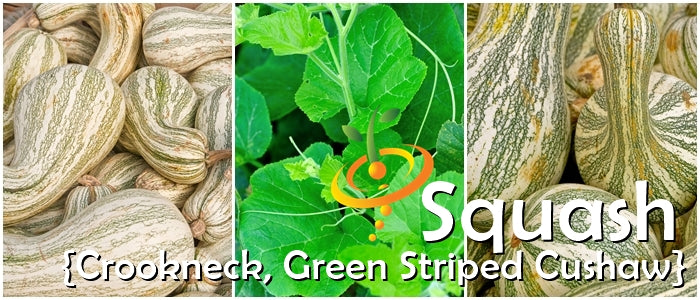
- The Cushaw plant produces some of the most beautiful 20" long squash
-
Curved/crook-neck variety
- Grows as a vine (not as a bush)
- Yellow colored flesh
- Very sweet and full of flavor - perfect for pies and canning
- Ideal for any sized garden and easy to grow
- Days to Maturity | 100 days
Additional Details
Though considered a vegetable in cooking, botanically speaking, squash is a fruit (being the receptacle for the plant's seeds). Squash can be served fresh (in salads) and cooked (squash stuffed with meat, fried squash, baked squash).
- The Cushaw plant produces some of the most beautiful 20" long squash
Sprouts/Microgreens - Sunflower
From $199 USDUnit price /UnavailableDescription
Baby sunflower micro-greens are delicious! If you've never tried sprouting sunflowers they make a great addition to salads. They are extremely rich in essential nutrients.
Sprouts/Microgreens - Radish, Rambo (Red)
From $299 USDUnit price /UnavailableDescription
-
Organic
-
Spicy
-
Very beautiful red sprouts
- Popular amongst many culinary chefs
-
Tastes like fully grown radish. If you like the taste of radish you'll love Radish Sprouts!
Follow SeedsNow.com's board Radish on Pinterest. -
continue shopping
YOU MAY ALSO LIKE
View all-
$29999 USDUnit price /Unavailable
-
All-in-One Heritage Tomato Garden Variety Pack
$3999 USD$4499Unit price /Unavailable -
All-in-One Mosquito Repellent Garden Variety Pack
$3999 USDUnit price /Unavailable -
All-in-One Medicinal Herb Garden Seed Bank
$9999 USDUnit price /Unavailable -
All-in-One Pepper Garden Variety Pack
$3999 USDUnit price /Unavailable -
All-in-One Chicken Garden Variety Pack
$3999 USDUnit price /Unavailable -
All-in-One Lettuce & Leafy Greens Variety Pack
$3999 USDUnit price /Unavailable -
All-in-One Culinary Herb Garden Variety Pack
$3999 USDUnit price /Unavailable -
All-in-One Homestead Seed Bank
$9999 USDUnit price /Unavailable -
All-in-One Medicinal Herb Garden Variety Pack
$4999 USDUnit price /Unavailable -
All-in-One Root Crop Garden Variety Pack
$3999 USDUnit price /Unavailable -
All-in-One Fall/Winter Variety Pack
$3999 USDUnit price /Unavailable -
All-in-One Sprouts/Microgreens Variety Pack
$3499 USDUnit price /Unavailable -
All-in-One Hydroponic Greens Variety Pack
$3999 USDUnit price /Unavailable -
All-in-One Fall/Winter Seed Bank
$8999 USDUnit price /Unavailable -
All-in-One Sprouts/Microgreens Seed Bank w/Sprouting Jar
$6999 USD$7999Unit price /Unavailable -
All-in-One Culinary Herb Garden Seed Bank
$8999 USDUnit price /Unavailable -
All-in-One Spring/Summer Seed Bank
$8999 USDUnit price /Unavailable -
All-in-One Urban Garden Variety Pack
$3999 USDUnit price /Unavailable -
All-in-One Cucumber Garden Variety Pack
$2999 USDUnit price /Unavailable -
*NEW!* Wildflower Scatter Garden Variety Pack
$3999 USDUnit price /Unavailable -
All-in-One SAVE THE BEES! Garden Variety Pack
$3999 USDUnit price /Unavailable -
All-in-One Salsa Garden Variety Pack
$3999 USDUnit price /Unavailable -
All-in-One Tower Garden Variety Pack
$3999 USDUnit price /Unavailable
FEATURED COLLECTIONS
View allcontinue shopping


















 Plant this mix in an area of your garden that gets partial shade. Includes a mix of 15 different shade tolerant (less than 6 hours of sunlight per day) flower varieties.
Plant this mix in an area of your garden that gets partial shade. Includes a mix of 15 different shade tolerant (less than 6 hours of sunlight per day) flower varieties. 


















 Includes a mix of 5 popular lupine flower varieties and colors. Scatter this mix of seeds in your garden and enjoy a beautiful assortment of lupine flowers.
Includes a mix of 5 popular lupine flower varieties and colors. Scatter this mix of seeds in your garden and enjoy a beautiful assortment of lupine flowers.


































 Includes a mix of 18 popular fragrant flower varieties and colors. Scatter this mix of seeds in your garden and enjoy the most fragrant flower assortment you've ever smelt.
Includes a mix of 18 popular fragrant flower varieties and colors. Scatter this mix of seeds in your garden and enjoy the most fragrant flower assortment you've ever smelt.



















 Includes a mix of 9 of the most vibrant and beautiful pink flower varieties. Scatter this mix in your garden and enjoy a beautiful assortment of pink flowers
Includes a mix of 9 of the most vibrant and beautiful pink flower varieties. Scatter this mix in your garden and enjoy a beautiful assortment of pink flowers


















 Includes a mixture of 6 popular coneflower varieties. Scatter this mix in your garden and enjoy a beautiful assortment of coneflowers!
Includes a mixture of 6 popular coneflower varieties. Scatter this mix in your garden and enjoy a beautiful assortment of coneflowers!



















 Plant this mix to attract beneficial insects such as ladybugs, lacewings, ground beetles and other insects that feed on pests.
Plant this mix to attract beneficial insects such as ladybugs, lacewings, ground beetles and other insects that feed on pests. 












 Includes a mix of 25 popular annual flower varieties that will produce a beautiful assortment of flowers suitable for cutting. The mix includes many of the flowers found in floral stores. This annual flower mix will blossom all-year-long creating a bountiful source of flowers.
Includes a mix of 25 popular annual flower varieties that will produce a beautiful assortment of flowers suitable for cutting. The mix includes many of the flowers found in floral stores. This annual flower mix will blossom all-year-long creating a bountiful source of flowers. 



























 Includes a mix of 21 popular annual flower varieties and colors. Scatter this mix of seeds in your garden and enjoy a beautiful assortment of flowers all year.
Includes a mix of 21 popular annual flower varieties and colors. Scatter this mix of seeds in your garden and enjoy a beautiful assortment of flowers all year.






















































































































































